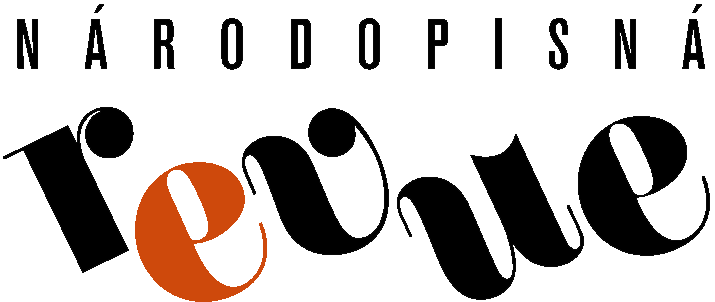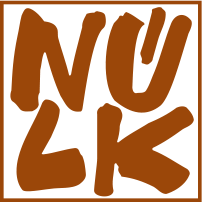Journal of Ethnology 1/2018 deals with city festivities. Jolana Darulová focuses on modern-day festivities in the Slovak town of Banská Bystrica (Festivities in Urban Environment with Focus on Mineworkers’ Traditions in the City of Banská Bystrica). Jana Lochmanová explains contemporary historicizing festivities in three Moravian towns (City Festivals in Jemnice, Brtnice and Jihlava). Marta Ulrychová deals with the development of an urban festival in the German location of Furth im Wald, and especially with a part of it, which consists of scenes depicting the fight between Saint George and the Dragon (Slaying of the Dragon – Traditional Summer Festival in the City of Furth im Wald in Upper Palatinate). Barbora Půtová describes and analyses urban festivities in Morocco, which intend to strengthen national identity and legitimacy of the local monarchy (Moussems: Moroccan Urban Festivals). Helena Nosková submits the theme of the Russians in Czech environment and the development of its festivities in the course of the 20th century (Festivities and Everyday Life of Russian “White” Émigrés in Prague Exile in Blending of History and Memories).
Social Chronicle remembers the anniversaries of the ethnologist Alena Plessingerová (born 1928) and the script editor and script writer Naděžda Urbášková (born 1938); obituaries are written for the Czech historians Josef Petráň (1930–2017) and Ctibor Nečas (1933–2017) and also for the Slovak choreographer Štefan Nosáľ (1927–2017). Other regular columns include information about exhibitions, conferences, as well as reviews of new books.
Festivities in Urban Environment with Focus on Mineworkers’ Traditions in the City of Banská Bystrica
The study focuses on modern-day festivities in the city environment. In its first section, it deals with theoretical definition of feast and celebration with two concepts - the epidemiology of representations by D. Sperber, and the invented tradition by E. Hobsbawm. In terms of space, the research is based on the city of Banská Bystrica in Central Slovakia, which tries to present the oldest and most significant events through selected historical events integrated in festivities. This concerns mainly mining industry, even though the development of Banská Bystrica has not been associated with the mining industry for several decades. Initiated by mineworkers’ associations and supported by the city, Emperor’s Visitations were held for three years. The festivity, at which representatives from different mining regions in Slovakia and abroad presented themselves, comprised several elements of ceremony, ritualized behaviour, dramatization, and mineworkers’ symbols. It was an attempt to establish a new tradition that was to remember the Emperor’s visits with the aim to complete the city’s image, to support tourism, and to reach economic benefits. It is the local self-government and the citizen’s interest that decide about its periodicity and cyclic repetition.
City Festivals in Jemnice, Brtnice and Jihlava
The study deals with modern-day city festivals in three Moravian cities (Jemnice, Brtnice and Jihlava). Those historicizing festivals emphasize specific features of their development and the history of the venue; they are based on self-identification, local pride and specificity. Although their origin reflects different geographic and historical circumstances, they share many common elements (long tradition; particular opportunity – a historical milestone to which the festivity´s development relates; very good support by local inhabitants who are organizers, parade participants and visitors). In the past, the festivals were strongly associated with Christianity. From the mid-20th century, the religious part was suppressed, however, it was at least partially renewed in all three cities after 1989. During the festivals, the cities experience a festive and extraordinary time and space separated from the everyday life. The organizing supports the perception of local identity, and it welds the community together. The residents of the cities feel compelled to organize the festivity. The festivals are important in terms of representation, economics and tourism, which is more and more emphasized. This puts stress on theatrics and rich accompanying programme.
Slaying of the Dragon: Traditional Summer Festival in the City of Furth im Wald in Upper Palatinate
The article deals with the development of a city festival in the Bavarian city of Furth im Wald, whose part also the Drachenstich (Slaying of the Dragon) play is. The play has evolved based on tableaus depicting the fight between Saint George and the Dragon, which used to be part of liturgical Corpus Christi procession. The first mentions come from the 16th century. In the 19th century, it was the German writers Alexander Schöppner and Maximilian Schmidt, and the Czech writer Božena Němcová who paid attention to the Slaying of the Dragon play. After repeated restrictions by the Church, which accumulated more and more from the 18th century, the scene got profane in 1887 – local amateur actors performed a new and longer text written by the teacher Heinrich Schmidt. He extended dialogs significantly and brought new characters to the play. His version survived until 1953 when Josef Martin Bauer replaced it by a new one, the story of which was set in the period of Hussite wars. The latest version, which was put on the stage in 2007 for the first time, was written by the professional theatre person Alexander Etzel-Ragusa, who also directs the play. The article observes the play’s development from a simple dramatic start to the present 80-minute-long performance, which is the principal axis of the two-week-long city festival. It pays attention to accompanying events, and – by means of a common characteristic of the location – it tries to find out the social conditions that have allowed this traditional phenomenon to be maintained for many years.
Moussems: Moroccan urban festivals
The subject of the paper is a description and analysis of the phenomenon called moussems – urban festivals that take place in Morocco from April to August. The current moussems, in comparison to their traditional sacral form, represent an international, secular and institutionalized festivity that is systematically modified and supported by the Moroccan king in order to develop tourism and to preserve local cultural traditions. The objective of the paper is to describe the creation of moussems, which originally celebrated the birth or death of saints in the rural environment and which offered an opportunity for nomadic tribes from the mountains to meet. Most importantly, it describes the transformation of moussems into an urban festivity whose current form and functions serve to enhance the national identity, the legitimacy and the power of the monarchy as well as to emphasize the diversity of Morocco´s tangible and intangible heritage. At the end of the paper, the transformation of moussems and the possibilities of how they could be used are exemplified by the Festival des Musiques Sacrées du Monde in Fez.
Festivities and Everyday Life of Russian “White” Émigrés in Prague Exile in Blending of History and Memories
The study focuses on the history of the Russian white émigrés in the then Czechoslovakia. The author shows that the white émigrés were perceived by the then Czechoslovak government as the future intelligentsia for new free Russia and for independent and free Ukraine. The emigrants were offered the opportunity of completing their studies, continuing their creative activities, or extending their education. The emigrants founded their own professional institutions, organized social life even for the Czech majority to make it familiar with the Russian culture. To the Czech environment, they translocated some of their festivals associated with Orthodoxy and folk tradition. After the Czechoslovak-Soviet Treaty of Alliance was signed (1935), the emigrants´ position got worse. The activity of domestic communists introduced Soviet festivities to Czechoslovakia. After 1945, new Soviet citizens arrived in Czechoslovakia, and the white émigrés became a persecuted group. Some of them were abducted to Soviet forced labour camps (Gulag) by Russian bodies. The domestic communists implanted new Soviet festivals, feasts and ceremonies – Great October Socialist Revolution celebrations, Grandfather Frost and others – with the help of the Association of Czechoslovak-Soviet Friendship in Czechoslovakia. In 2001, the Czech Republic officially acknowledged the Russian national minority that got its historical rights as a minority thanks to the Russian white émigrés in the 1920s. Several associations within the minority try to renew original Russian traditions and feasts in the Czech environment.



